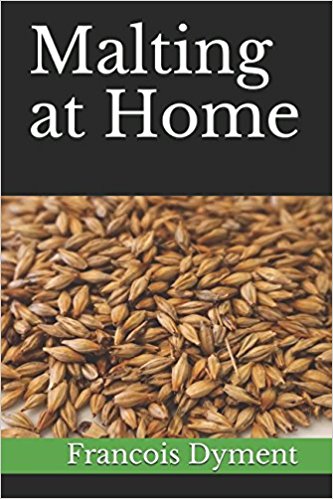Raising the pH of the steep water with Sodium Hydroxide has almost eliminated the bitter grassy flavours I was getting when malting oats. Please read this post first on my malting process. This beer is waaaay better than the last oat beer which made me give up on oats, I even state in my book that when malting oats, off flavours are unavoidable. I reached this conclusion after trying different sources of oats and hulless oats as well. I kept getting grassy flavours developing a few days into the malting process. I’m still not 100% sure what the source of these flavours are but according to these articles it could be the oxidation of lipids.
In Optimization of Enzymatic Activities in Malting of Oat by E. Hosseini, M. Kadivar and M. Shahedi …”Unlike other types of cereals, fat exists throughout the grain that possesses much lipase activity in its neighborhood and its native condition. During germination, the level of free fatty acids (FFAs) rises remarkably and the subsequent oxidation of these acids in storage of malt produces hydroxy acids which result in development of bitter taste.” Also in this article Role of lipid reactions in quality of oat products. by Pekka Lehtinen and Simo Laakso “In oat, a lipoperoxidase (EC1.11.1.-) activity is responsible for the conversion of hydroperoxides to relevant hydroxyacids (Biermann and Grosch 1979). These hydroxyacids are suggested to be partially responsible for the bitter taste associated with the enzymatically active oat (Biermann et al. 1980).”
If I’m understanding it correctly, the first article suggests that by reducing Lipase activity one can reduce this oxidative effect. Further on in the article there’s this . “Liukkonen et al [15] reported that lipase activity is sensitive to alkaline pH above 8 and it subsequently dropped.” However, the experiments in this article only show the effects of pH between 3 and 8. So this is why I thought I’d try increasing the steep pH to 8 or above to see if it would have any positive effect. It only took 0.4 grams of lye added to 4 Litres of water to change the pH from 6.3 to 9.5. It’s a minuscule amount but if you’re going to try this be careful when handling lye as it can burn your skin, always where gloves and always add the lye to the water never the other way around. I wonder if it’s the Sodium Hydroxide that has an effect on lipase or is it just the pH level and would naturally alkaline water have the same effect? I guess this will be my next experiment. 
The beer is sort of yellowy brown. It’s got a nice head and mouthfeel and a creamy chocolatey sort of flavour. If I’m really looking for it, I can taste just a hint of the grassiness but it’s very faint and disappears as soon as I detect it. I can drink this beer without noticing it at all. I did a step mash for this one with an hour at 107F, 45 minutes at 125F and then an hour at 153F. My pre-boil gravity was pretty low at 1.036 which I think was due to my low germination rate of 70-75% and the fact that oats do not have the same diastatic power as barley. So I boiled for 2 hours to up the gravity 1.053. Had I only boiled an hour the gravity would be 1.045. Final gravity was 1.012 for an A.B.V. of 5.36 but a final volume of only 4 gallons. The colour comes from some of the roasting I did, it’s got 10 oz of toasted oat malt (biscuit) 1 hour at 350F. 4 oz of a chocolate oat malt +30 minutes at 425F and 4 oz of roasted oat malt +45 minutes at 450F. The malt itself was kilned quite high with an air-on temperature of 195F but the malt temp only reached 190F. This high kilning may also have contributed to my low numbers.










